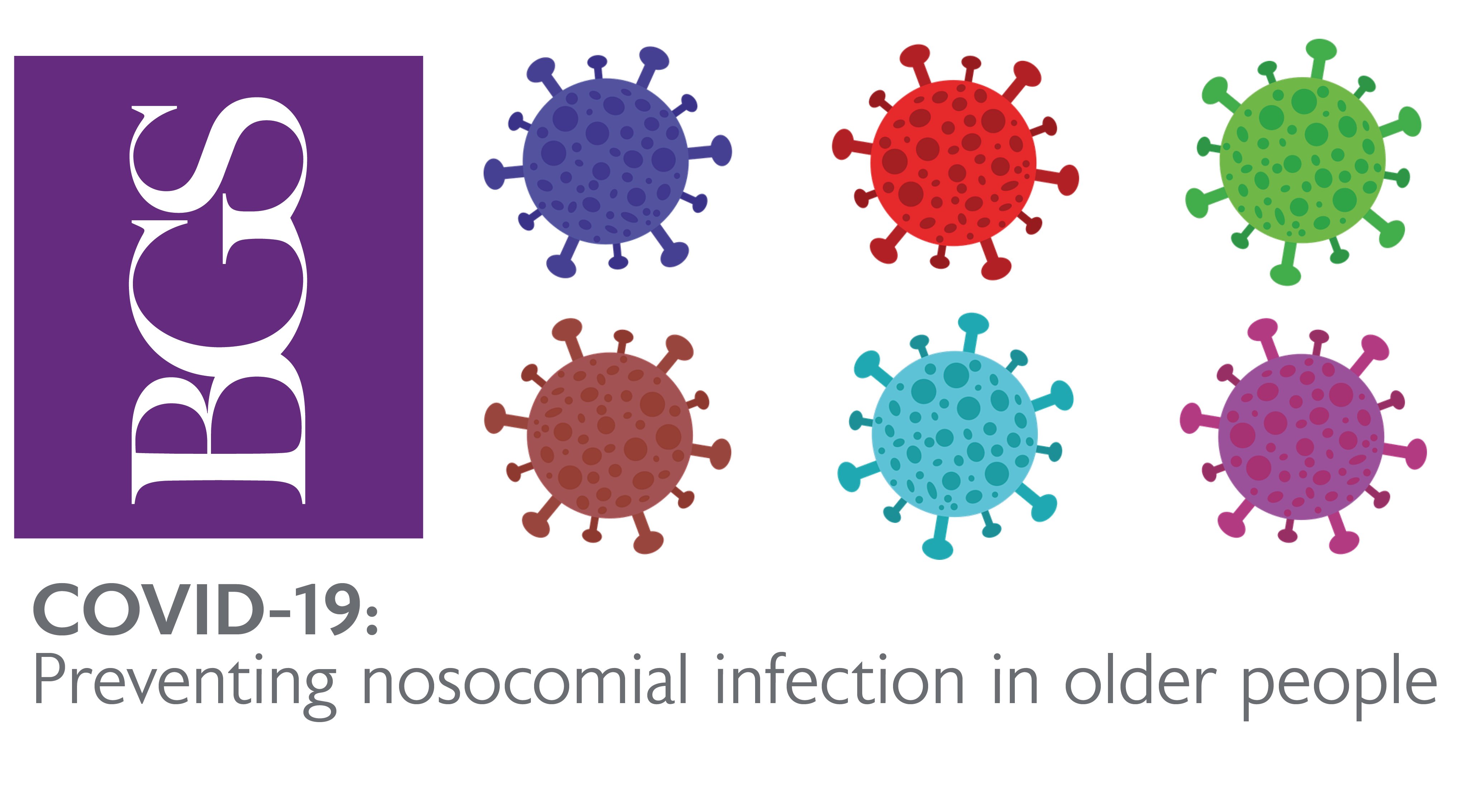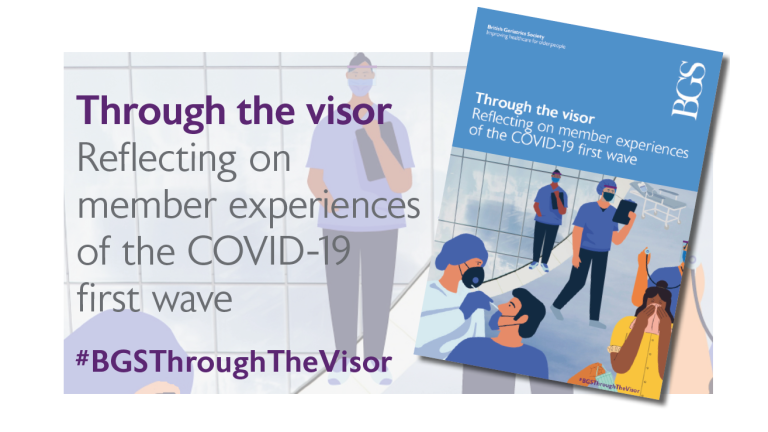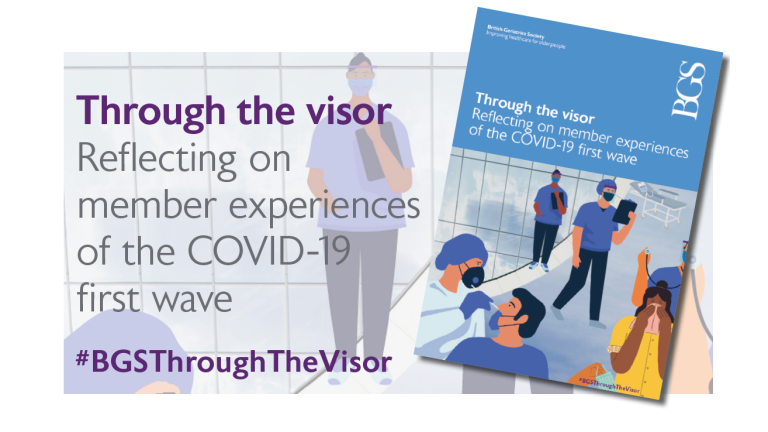As we come into winter, it is worth reiterating the importance of infection prevention and control measures in our hospitals.
This year, along with all the usual pressures, there is the added challenge of a workforce depleted and exhausted from their extraordinary efforts over the past two years, and a new COVID-19 variant to contend with. Many geriatric wards and care homes were very hard hit by COVID-19 outbreaks during the previous waves of this pandemic. Anything we can do to support staff in preventing nosocomial infections in hospital this winter will make a difference.1
A retrospective observational study of patients with COVID-19 across 18 hospitals in Wales between March and July 2020 estimated 16.4% cases were probably hospital-acquired with an in-patient mortality for nosocomial infection ranging from 38 to 42% - higher than mortality in those with community-acquired infection. Those with hospital-acquired infection were older and more frail.2 The COVID in Older People (COPE) study of patients with COVID-19 in hospital, which included patients across 10 hospital sites in the UK and one in Italy, estimated 12.5% of COVID-19 infections in hospital were hospital-acquired, with an overall mortality of 27% in patients with nosocomial COVID. Increased mortality was associated with older age, increased frailty, renal failure and increased CRP.3
Given the excellent uptake of COVID vaccinations, especially amongst the older sector of the population, and the major progress made with COVID treatment developments, we are in in a stronger position facing this winter compared with last year (2020). However the pressures on the entire health and social care system from the backlog of delayed treatments and the challenge of new COVID variants such as Omicron remain substantial.
Many of the factors contributing to nosocomial COVID, including our hospital estate and lack of single bays for patient isolation, are outside the control of overstretched ward teams.4
Nevertheless it is important that we learn from our experience in the early waves of this pandemic, share lessons learned and place renewed emphasis on infection prevention and control in hospitals this winter. Below are some of the key principles in prevention of nosocomial COVID-19 infection in older patients.
Organisations and departments need to encourage and support staff to get fully vaccinated against COVID-19, including booster doses in accordance with JCVI guidance, and influenza vaccination this winter. There is evidence, in particular from the first wave of the pandemic before vaccinations were available, that infection among staff posed a risk of transmission to patients. We have abundant evidence from our experience with influenza over the years that vaccinating health and care staff helps reduce staff sickness through the winter months and helps reduce infection in very frail patients.
Some of our older hospital inpatients with prolonged lengths of stay may have missed their second COVID-19 vaccine or be due booster doses. These patients should be offered vaccines while still in hospital if clinically well enough. Vaccination is the best protection against COVID and against severe disease.
Rapid PCR COVID tests at the front door and in hospital if a patient becomes symptomatic on the ward, plus isolation of the patient until a test result is available, reduce the exposure of other patients and helps place patients in the most appropriate setting as early as possible.
Adherence to PPE guidance and other infection prevention and control measures, including frequent handwashing between each patient contact, needs to be sustained.
The NHS response to the Healthcare Safety Investigation Branch investigation into COVID-19 transmission in hospital recommended a change in culture to support frontline staff and recommended creating infection prevention and control (IPC) champions to reinforce messages around protecting ourselves and others.
The level of staffing with multiple shortages, particularly in nursing teams across acute medical and older people's wards, is among the biggest challenges this winter. The Healthcare Safety Investigation Branch investigation into COVID-19 transmission in hospitals noted the potential impact of staff fatigue and emotional distress on nosocomial transmission of COVID-19.
Much of the earlier work on enhancing health and wellbeing in the workforce focused on ICU/critical care staff. Many of our very frail patients were managed at ward level in emotionally challenging circumstances with severely restricted family visiting. Sickness levels and fatigue are high across medical wards, contributing to widespread staff shortages. Wellbeing hubs with proactive outreach services need to be accessible by all our frontline staff, including those working on medical and older people's wards.
As healthcare professionals working with older people, we are all acutely aware that multiple bed moves of patients in hospital are associated with adverse outcomes, including increased length of stay, falls and delirium. Multiple bed moves appear to have been a contributory factor to nosocomial infection in some of the earlier investigations of nosocomial spread of COVID-19 on stroke wards.5 We need the support of managers to ensure that patient moves from ward to ward or from hospital site to hospital site are driven by clinical need and in accordance with good infection control principles and good patient care, not driven by bed capacity issues.
Geriatric medicine services provide vital rehabilitation, intermediate care and stepdown services across the UK. We play a crucial part in the initial recovery and rehabilitation of patients post COVID. Many of our wards receive ‘recovered’ COVID patients alongside non-COVID admissions from the community. If mixing these patients in the same ward areas, it is vital that the ‘recovered’ COVID patients are truly ‘recovered’ in the sense of non-infective (i.e. at least 14 days post their positive PCR test and at least three days clinically recovered with no fevers, no ongoing oxygen requirements and no ongoing COVID symptoms).
Long delays in crowded acute admissions areas pose an infection risk. Alongside providing high quality in-patient care to hospitalised older people with frailty, we need to sustain and develop front door services that offer them rapid access to comprehensive geriatric assessment. An example of good practice is the Older Person’s Assessment Unit in the Emergency Department in Swansea, which directly assesses older people presenting with falls and frailty syndromes, avoiding long stays in a crowded Emergency Department and in many cases avoiding hospital admission.6 Paradoxically, some front door services for older people were temporarily suspended during the first wave of the pandemic.
The Healthcare Safety Investigation Branch investigation into COVID-19 transmission in hospitals and the NHS response7 advised review of the built environment in existing and new hospital estate with particular emphasis on development of ventilation guidance. Guidance in relation to minimum clear space around beds and standards of ventilation expected on our wards would be welcome.



